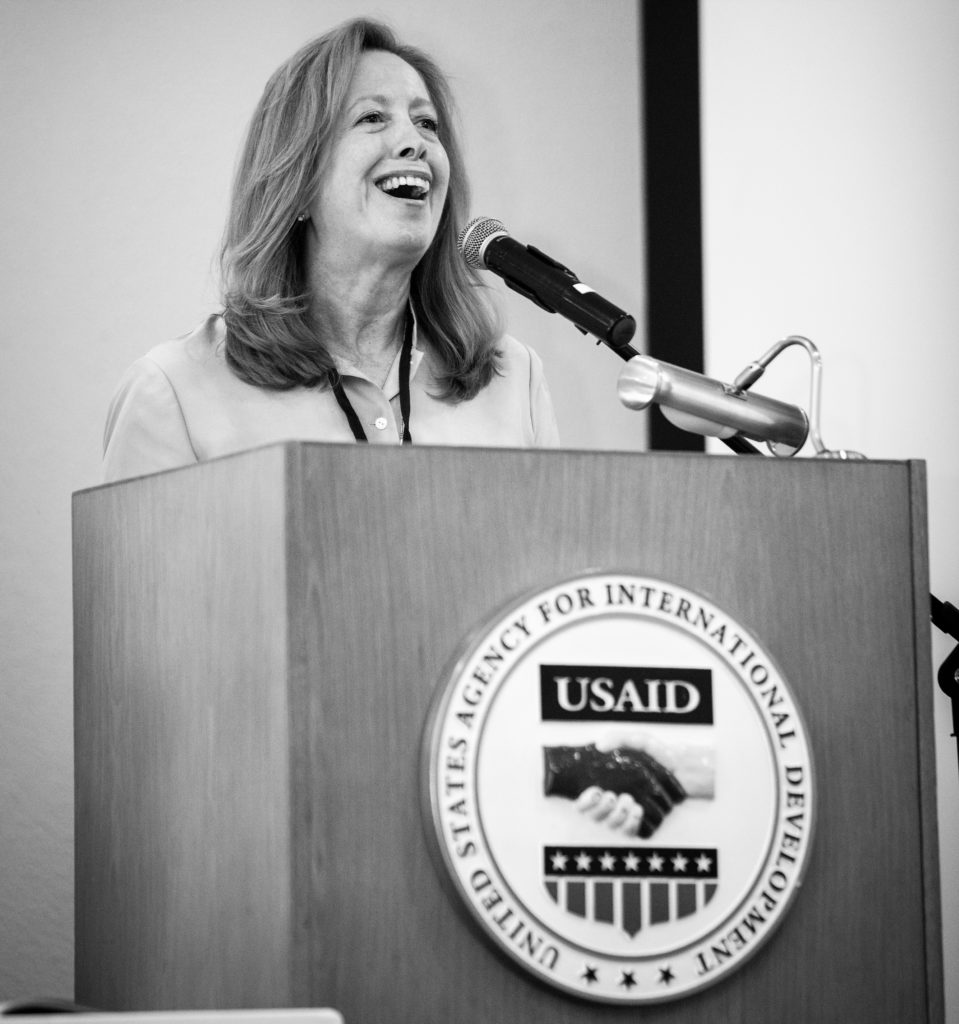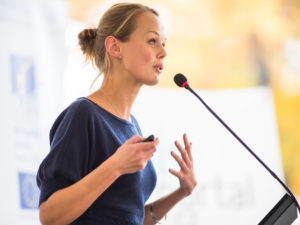Storytelling Skills for Global Health

Global Health Storytelling, or the ability and skill to make a complex global health subject clear and memorable, is underdeveloped and underutilized by global health professionals. Storytelling engages your audience (colleagues, counterparts, community leaders and other stakeholders) in a way that helps you inform and influence decisions that might save lives.
In the photo above, I am at the USAID Africa Small Business Conference, sharing my story of why, and how, I started RGH. My story makes the point of why it’s important to be different in order to innovate and find solutions to the problems we have global health. I could have shared facts and shown where the gaps are in global health, but by telling my story, each person in the audience can reflect on their own professional journey and consider ways they can also change their paths to be more effective.
Storytelling works because it is easier to make a point or convey a concept when told in a story. We engage both sides of the brain with a story, and the point is more likely to be remembered and adopted. You do not only address the reason and understanding but also the emotions that go with our work in global health.
There are three steps to tell an effective story in global health:
- Get clear on the global health point you want to make
- Tell the story without too much unnecessary detail
- Engage the audience with questions to help them apply what they heard.
This three-step process is simple but not easy. You need to practice every day to get better at it.
There are several types of stories you can use. I talk about these and share other tips about how to use storytelling in the next series of RGH podcasts. Listen to the first podcast in the series by clicking here. You can also listen to other podcasts and sign up on iTunes to get updates when podcasts become available.
Keep doing good and effective work.




